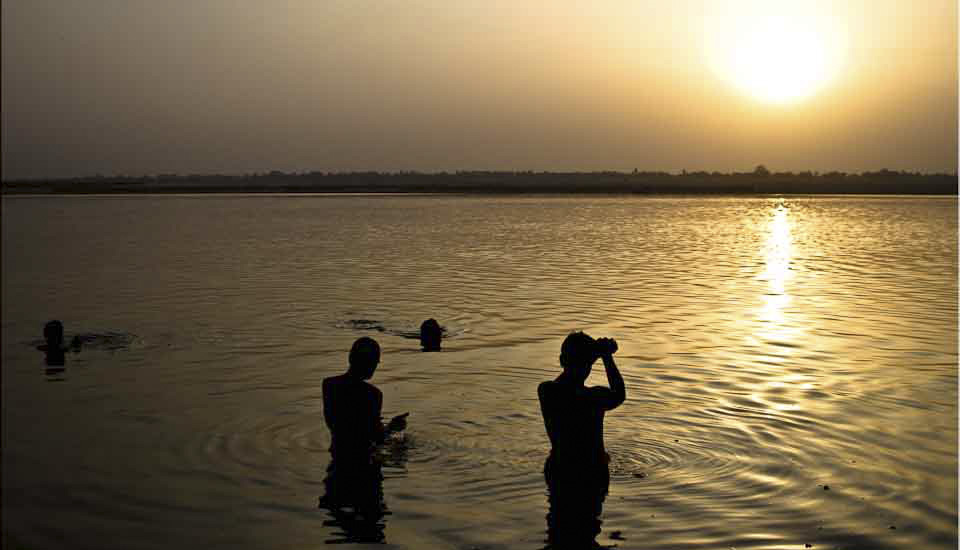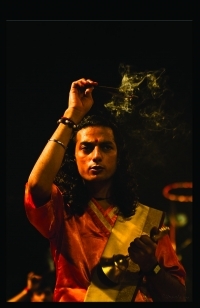.jpg)
Ibn Tulun Mosque and the Mosque of Sarghatmish Framed
From the 17th-century Egyptian roof terrace of the Gayer-Anderson Museum, two of Cairo’s neighbouring mosques are so close you can almost touch them. (iPhone6)
The centre of Cairo, Egypt’s sprawling and populous ancient capital on the banks of the Nile River, is so dense with vibrant culture and UNESCO- listed history as to be overwhelming.
So, it pays to sample small sections at a time.
The Al-Sayeda Zainab Governorate is one of the city’s oldest and most crowded neighbourhoods. This district centres on – and is named for – the eponymous mosque reputedly built over the gravesite of Sayyida Zaynab, granddaughter of the Islamic prophet Muhammad.
Our focus, however, is another medieval mosque nearby. The Mosque of Ibn Tulun is almost as old, and arguably more famous. Originally built between 876 and 879 AD, this mosque – which has been restored several times – featured in the James Bond film The Spy Who Loved Me, as well as in the video games Serious Sam 3: BFE and Tomb Raider: The Last Revelation.
In medieval times, it was common practice to build private homes against the outer wall of a mosque, and by the 1900s this mosque could barely be seen from the outside. In 1928, the Committee for the Conservation of Arab Monuments organised the demolition of all but two of these houses: the “House of the Cretan woman” (Bayt al-Kritliyya), built in 1632, and the adjacent Beit Amna bint Salim, built in 1540. At some point in time, a bridge between the two structures was added at the third floor level, and this combined building was considered to be worthy of protection.
After the property was restored, a retired collector and self-described ‘Orientalist’, Major R.G. Gayer-Anderson, was given permission to live in the house by the Egyptian Government. He oversaw the installation of electricity and plumbing and filled the home with some of his extensive collection of art, furnishings, and carpets. After living there between 1935 and 1942, he returned to England and gifted the house and its contents back to the government. Noted for being one of the best-preserved examples of 17th-century domestic architecture left in Cairo, and now named the Gayer-Anderson Museum, the house is open to the public, and is accessible through the outer walls of the mosque.
I was traveling in Egypt with a small group, and we had flown back from Aswan that morning (see: Boats on the Nile). Fortified by lunch at one of the Gad chain of cheap and tasty Egyptian fast-food restaurants, we set off to explore the mosque and neighbouring museum.
On a photographic note: I wasn’t allowed to use my cameras inside the museum, but for some reason, iPhones were permitted!! The lens in my old iPhone6 was a long way from the modern iterations of camera phones; even so, I hope the pictures give you an idea of the richness of the architecture and artifacts.
.jpg)
Fresh Fast Food
What could be better than Shawarma – hot spiced rotisseried meat, sliced with fresh salad and dressing into a warm pita wrap? (iPhone6)
.jpg)
Ancient Mosque from the Bus
From the road, you can get a sense of how these old buildings all butt up against each other.

The Ziyada
The entrance to the Mosque of Ibn Tulun takes you into a large ziyada, or empty space between the mosque and the surrounding buffer wall. On the right hand side, an entry leads into the mosque itself. The portal directly in front of us takes us into the Gayer-Anderson Museum.

Textured Walls in the Ziyada
The walls around the space show their age – and the intricate detailing that went into their construction.

Visitors at the Inner Entrance to the Mosque of Ibn Tulun

Lamp
Everywhere you look in the Gayer-Anderson Museum, some magnificent old detail catches your eye. (iPhone6)

Wooden Window Lattice (iPhone6)

Ghostly “Selfie”
I’m not big on selfies, but when intricate silver artifacts are encased in glass, it is hard to avoid! (iPhone6)

Silhouetted Urn
Latticed windows look out at the crowded city around us; … (iPhone6)

Life on the Rooftops
… a city where everyday life goes on.

Inlaid Chest of Drawers (iPhone6)

Bastet and Nefertiti
Guarded by a Mashrabiya screen, these backlit figures of the cat goddess Bastet and Queen Nefertiti are replicas; Gayer Anderson donated the original Late Period bronze cat to the British Museum. (iPhone6)

Nefertiti Bust
This replica queen is modelled on the original that has lived in the Neues Museum in Berlin since its discovery in 1912. (iPhone6)

Towards the Mosque
Back in the ziyada, Ibn Tulum Mosque’s famously distinctive brick minaret with its external spiral staircase stands out.

Quba from the Minaret
The climb up the minaret is worth your while, affording views back over Cairo’s largest mosque, the crowded old city, and the hills beyond.

Geometric Patterns – Sarghatmish Madrasa
The tower also gives views over other mosques, …

Finials on the Sarghatmish Madrasa
… near …

Mosques in the Distance
… and further away.

Arches
The repeated arches inside the mosque are decorated with floral and geometric designs in the abbasid style.

Quba Framed

Young Woman at the Mosque
The people who are visiting the mosque are as interesting to me as the architecture.

Kufic Calligraphy
The main mihrab – or niche indicating the qibla, the direction of the Kaaba in Mecca, is topped with the Muslim profession of faith: ‘There is no God but God’.

Young Women
These young women were part of a university group visiting the mosque, and were a delight to chat with.

It is always wonderful finding locals to interact with! They bring the architecture of these ancient places to life.
Until next time,
Happy Travels!
Pictures: 12October2019



























.png)

